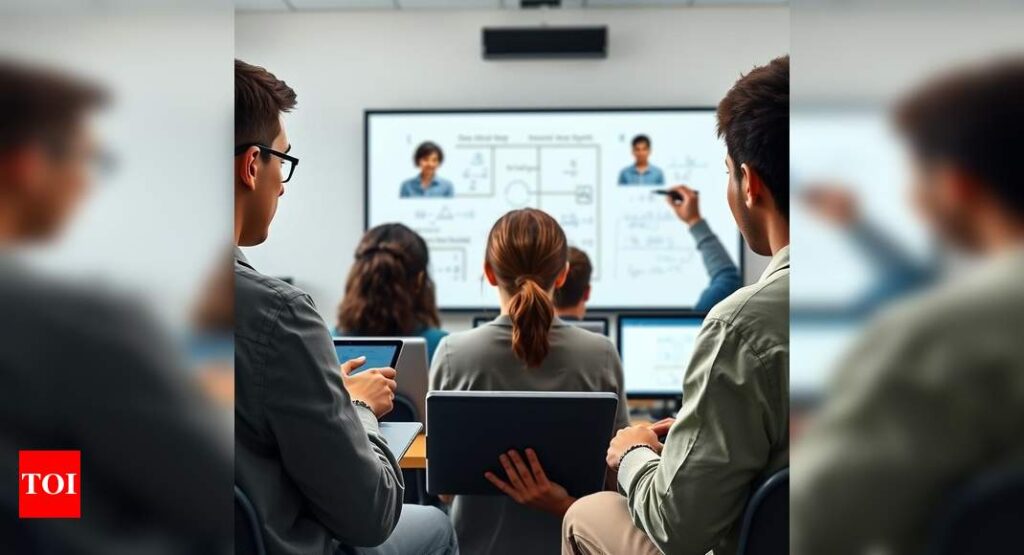Adapting to Diverse Learning Styles: How Virtual Classrooms Promote Inclusivity Through Personalization

In today’s rapidly evolving educational landscape, virtual classrooms are reshaping the way students learn. With a growing emphasis on inclusivity, online schools are going beyond traditional one-size-fits-all approaches to create tailored learning experiences. By addressing the diverse learning styles of students, virtual classrooms foster an inclusive environment where every learner’s needs are met. This approach allows students to engage, understand, and thrive at their own pace, ensuring that learning is not only personalized but also accessible to all.
Understanding the Need for Inclusivity in Virtual Classrooms
Virtual classrooms have become a pivotal part of modern education. Unlike traditional in-person settings, online schools have the flexibility to cater to a broad range of students, offering customized learning experiences that go beyond just academic content. The key to this flexibility lies in the recognition of diverse learning styles. Every student absorbs information differently—some are visual learners, others are auditory, and some excel through hands-on experiences. By acknowledging these differences, virtual classrooms create an inclusive environment that promotes effective learning for every student, regardless of their preferred style.
Adapting Content to Different Learning Styles
In a traditional classroom, teachers often have limited tools and time to meet the needs of students with varying learning preferences. However, virtual schools are equipped with a range of tools that allow educators to deliver content in multiple formats. Online platforms can incorporate a variety of teaching methods, such as video lectures, interactive simulations, digital textbooks, and audio resources, enabling students to engage with the material in a way that best suits their learning style.
- Visual Learners: For students who learn best through seeing, online classrooms often feature visual aids such as diagrams, infographics, videos, and charts. These students can benefit from interactive tools like virtual whiteboards or mind-mapping software, which help them organize and visualize complex concepts.
- Auditory Learners: For students who thrive on listening, virtual classrooms can provide audio lectures, podcasts, and discussion-based learning activities. Real-time audio feedback and the ability to participate in voice discussions help these learners absorb information more effectively.
Kinesthetic Learners : Students who learn best through movement and hands-on activities can benefit from interactive, action-based content. Virtual simulations, interactive games, and assignments that require physical activity or the use of digital tools allow kinesthetic learners to engage deeply with the subject matter.
By offering these varied formats, online schools ensure that every student can access content in the way that is most effective for them, making learning both more inclusive and engaging.
Personalizing the Learning Experience
One of the greatest advantages of virtual classrooms is the ability to personalize learning paths for individual students. Unlike traditional classrooms, where all students are often expected to progress at the same pace, online schools can offer flexible timelines and customized learning experiences. This allows students to work through material at their own speed, giving them more control over their learning.
- Pacing: Virtual classrooms often allow students to progress at their own pace. This ensures that students who need more time to master certain concepts can take it, while others who grasp material quickly can move on to more challenging content without feeling held back.
Adaptive Learning Technologies : Some online schools incorporate adaptive learning technologies, which use data to adjust the difficulty and pace of content based on how well a student is doing. If a student struggles with a particular concept, the system can provide additional resources or alter the content to help them better understand the material. This type of technology ensures that students are never left behind and can continue progressing at their own pace.- Individualized Support: Virtual classrooms often provide more one-on-one opportunities for support through online tutors, learning coaches, or discussion forums. These personalized interactions give students the ability to seek help whenever needed, ensuring that they can receive the support they require to succeed.
Fostering an Inclusive Community
In addition to adapting the content, virtual classrooms also work to build a community where all learners feel included and valued. The ability to connect with peers and instructors is essential for a positive educational experience. Online schools are increasingly using collaborative tools like discussion boards, group projects, and live video sessions to foster a sense of community among students. These features help students develop social bonds, share ideas, and learn from each other, all while respecting the diverse learning needs of every individual.
By prioritizing inclusivity, virtual classrooms create an environment where students are encouraged to engage in discussions and contribute to the learning process. Inclusivity not only applies to how content is delivered but also to how students are encouraged to participate and collaborate with their peers, fostering an atmosphere of mutual respect and shared growth.
Empowering Educators to Meet Diverse Needs
Educators in virtual classrooms are empowered with a variety of tools to create personalized and inclusive learning experiences for their students. Through data-driven insights, teachers can monitor student progress, identify learning gaps, and adapt their teaching strategies accordingly. Professional development opportunities also ensure that educators are equipped with the skills and knowledge to support diverse learners effectively.
- Differentiated Instruction: Teachers can use differentiated instruction techniques in virtual classrooms to cater to the diverse needs of students. This might involve offering varied assignments, providing additional resources, or adjusting the level of difficulty based on the student’s needs.
- Feedback and Communication: The feedback loop in virtual classrooms is more dynamic than ever. Teachers can provide timely, personalized feedback to students, helping them understand where they need to improve and offering encouragement along the way.
Data-Driven Decisions : Virtual schools often provide data analytics tools that help educators track student performance. This allows them to make informed decisions about how to best support each learner’s journey.








